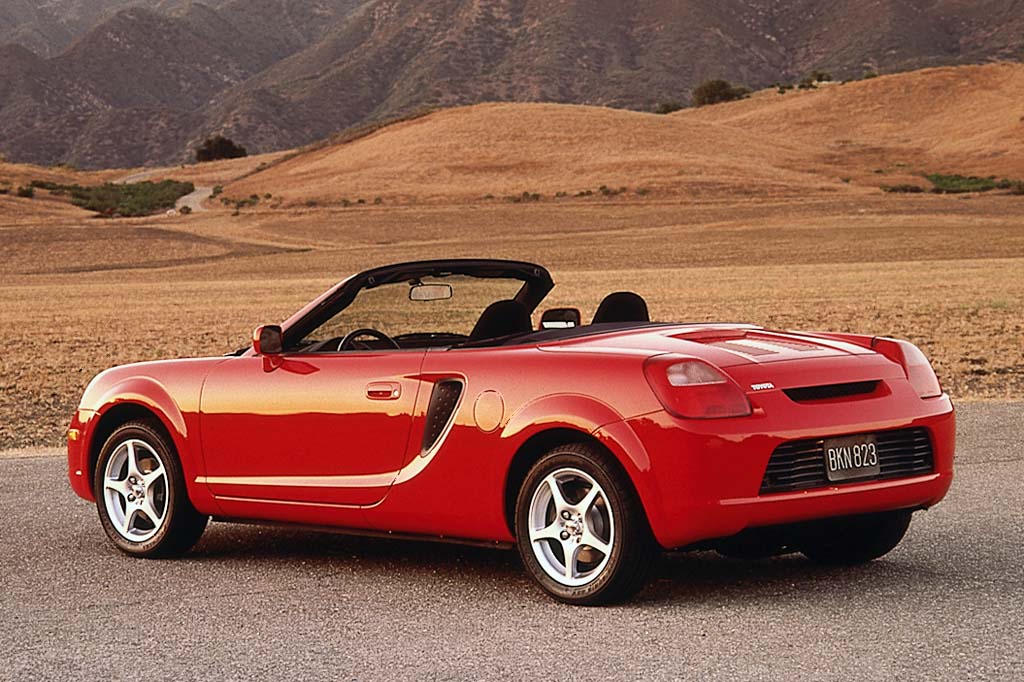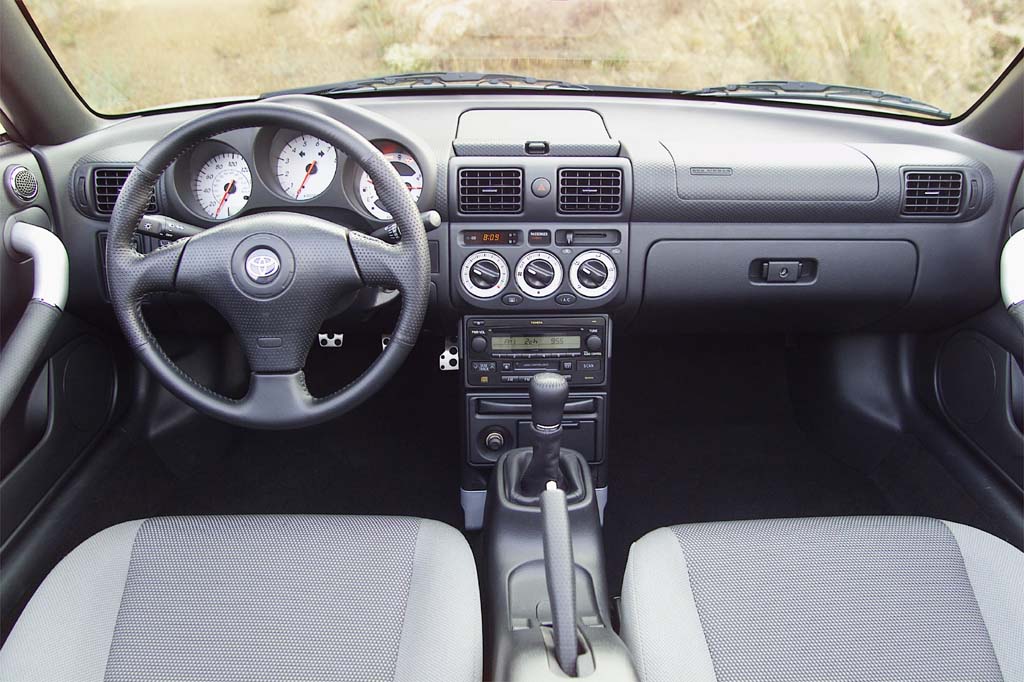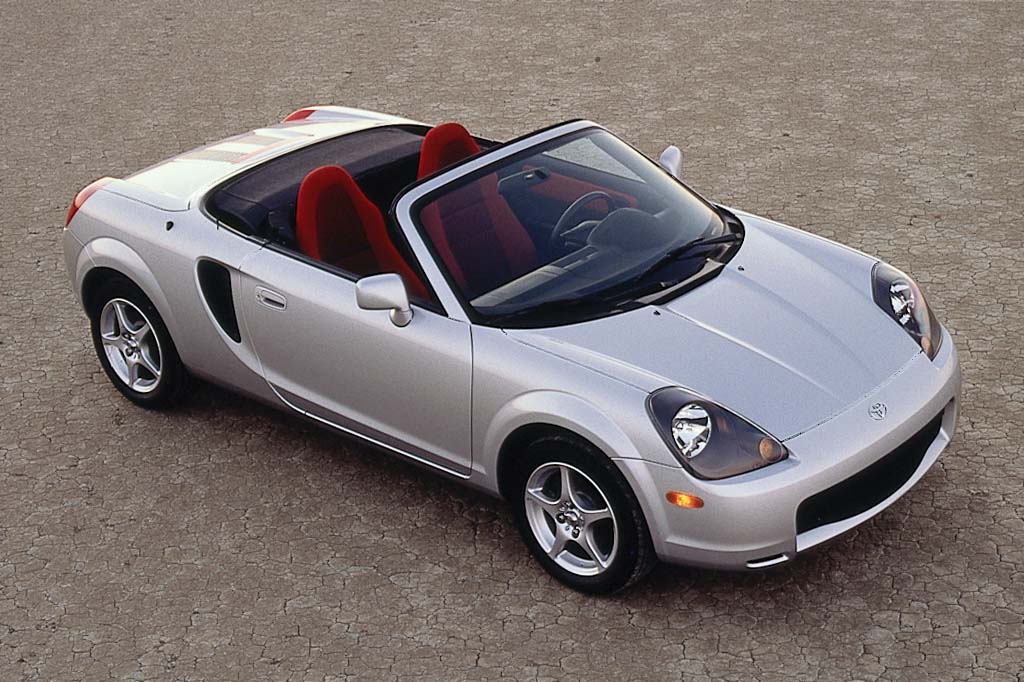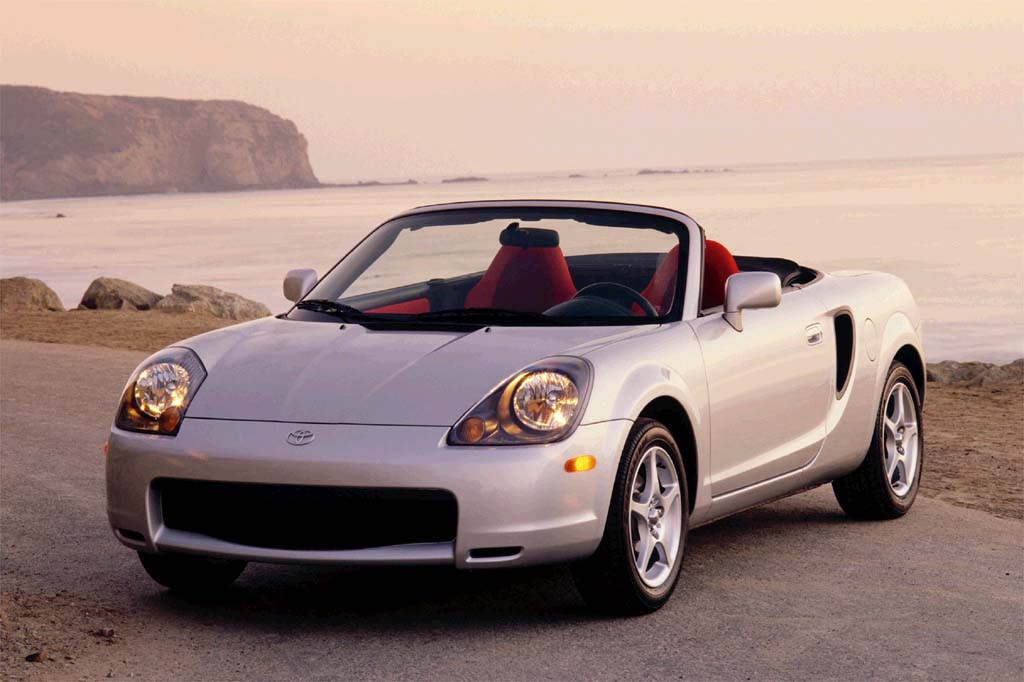| Sporty/performance car; Built in Japan |
|
|
| Good condition price range: $5,000 – $11,000* |

2000 Toyota MR2 Spyder

2000 Toyota MR2 Spyder

2002 Toyota MR2 Spyder interior

2000 Toyota MR2 Spyder

2001 Toyota MR2 Spyder
| Pros: |
|
| Cons: |
|
Nimble and eager, the MR2 delivers genuine sports-car thrills. Compared to the more practical Miata, however, it’s more of a short-haul commuter or weekend toy. Workmanship on an early test MR2 was disappointing for Toyota, prompting several squeaks and rattles.
Overview
Borrowing a name from the recent past, Toyota launched a mid-engined, rear-drive, two-passenger sports car as a late 2000 model. The name and configuration had last been seen in 1995, in the form of an MR2 coupe. This time, Toyota made the MR2 a Spyder convertible instead.
Priced to go against the popular Mazda Miata roadster, the MR2 Spyder also competed against the more costly BMW Z3-Series and Honda’s S2000. Built on a modified version of the Corolla sedan platform, the MR2 held a 1.8-liter four-cylinder engine, adapted from the one in the larger Celica sport coupe. Tuned to deliver 138 horsepower, the engine came only with a five-speed manual transmission.
The folding soft top contained a glass rear window with defroster provision. No lift-off hardtop was available, so the MR2 Spyder was strictly a convertible.
Standard equipment included all-disc antilock braking, air conditioning, a tilt steering wheel, power mirrors and locks, power mirrors, a CD/cassette stereo system, and 15-inch alloy wheels. No factory options were offered, but a Toyota dealer could install a tonneau cover, front-end mask, and wheel locks. Toyota intended to limit availability to about 5,000 cars per year.
Yearly Updates
| 2001 MR2 Spyder Because the MR2 Spyder had been launched late in the 2000 model year, nothing changed for 2001. |
| 2002 MR2 Spyder Technology took center stage for 2002, as a unique new transmission became available. Working without a clutch, the optional sequential manual gearbox had no conventional “H” pattern shift lever. Gears could be changed by moving a floor lever forward to upshift, or back to downshift. Or, the driver could use an optional pair of steering-wheel buttons to accomplish the same task. No automatic-shifting capability was provided, and no automatic transmission was available for the MR2 Spyder. |
| 2003 MR2 Spyder The sequential manual transmission was upgraded from 5 speeds to 6 for ’03. Exterior changes included a reshaped nose, new headlamps and taillights, and color-keyed instead of black side air intakes. MR2 also got restyled gauges, chrome and metal-look interior trim, standard fog lights, and a power antenna in place of a fixed mast type. Wheel size stayed 15 inches in front, but grew to 16 inches in the rear, where slightly wider tires are fitted as well. Cruise control was a new feature with the SMT. |
| 2004 MR2 Spyder New for ’04 is the availability of a limited-slip differential on the MR2 Spyder. |
| 2005 MR2 Spyder This midengine 2-seat sports car is essentially unchanged for 2005, which is its final year. |
